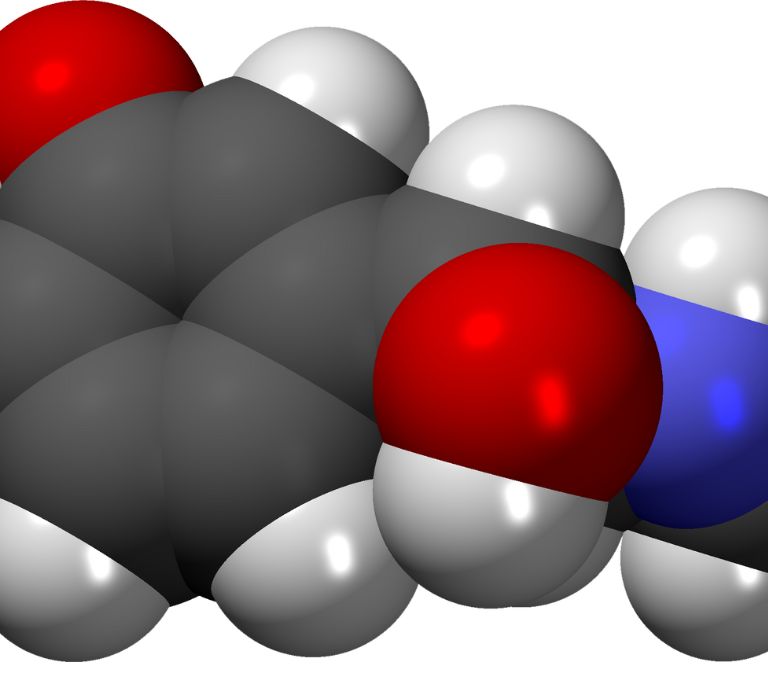Alcohol is one more substance in the food supply that gives energy (7 kcal per gram), Even though there is some discussion among health experts about whether alcohol should be considered a supplement. The alcoholic drink has been utilized socially for millennia.
However, history has demonstrated that it very well may be harmful and helpful to health. Moderate drinkers have a lower occurrence of coronary illness, stroke, and hypertension than nondrinkers-and they live longer than non-drinkers!
The health advantages of alcohol are outlined by a circumstance known as the “French Paradox.” Among 18 monetarily created nations (counting the United States), France has the most minimal death rate, yet plasma cholesterol levels and blood pressure are not lower than that of different nations.
One distinction is that the French are the main buyers of wine on the planet. While there are other ways of life and ecological contrast among created nations, numerous shoppers in the United States have gone with the same pattern by drinking a glass of wine every day to “keep the heart healthy.”
Even the United States government and the American Heart Association have recognized that moderate drinking can assist people in living longer. The American College of Cardiology has moved toward it from an alternate point by referring to avoiding alcohol as reducing the risk for coronary illness.
As you near menopause, your body gradually stops producing progesterone and estrogen hormones. These fluctuations in hormonal levels cause diverse symptoms. Many women try to alleviate their symptoms, but knowing what triggers them is fundamental.
Some of these symptoms are:
- Hot Flashes
- Sleeping Difficulties
- Mood Swings
- Anxiety
- Lower Libido
- Fatigue
- Fuzzy Thinking
Various routines can influence the recurrence and gravity of menopausal symptoms. Drinking alcohol seems to be one of them.
Unlike men, women absorb alcohol faster, which makes alcohol riskier for women.
Some women find that alcohol relieves some symptoms, while others face its negative effects. Due to its toxin content, alcohol can cause a lot of damage to the body and particularly increase the severity of menopausal symptoms in women. It also increases the risk of cancer, osteoporosis, liver disease, and heart problems.
Aging also makes us more susceptible to the effects of alcohol due to the loss of water volume in the body, which causes a partial inability to dilute alcohol in the body.
When taken in moderation, alcohol may positively affect some women while posing a threat to the severity of menopausal symptoms in others. So, if you must drink, do so with extra caution and maximum moderation.
What Does Alcohol Do to Female Hormones?

Major exploration of the physiological impacts of alcohol intake during puberty focuses on females. One analysis revealed that estrogen levels were lessened among young girls ages 12 to 18 for up to 14 days after drinking. This finding suggests the probability that alcohol modifies the regenerative arousing and growth that marks puberty in females.
However, the role of estrogen in bone development raises the question of whether alcohol consumption during puberty significantly affects bone well-being. Alcohol consumption during puberty influences body organization and development by modifying food consumption patterns while alcohol is being consumed.
Alcohol remarkably disturbs regular menstrual cycling in females. Alcoholic women are known to have different feminine and regenerative problems. Some of these problems are;
- Infertility
- Permanent cessation of menstruation
- Absence of ovulation (anovulation)
- Unpredictable monthly cycle
Alcoholics frequently have other medical conditions like liver infection and lack of healthy sustenance, so regenerative deficiencies may not be directly connected with alcohol consumption.
In females, alcohol intake prompts significant damage to the liver and several organs, which also causes feminine abnormalities. It is crucial to emphasize that alcohol ingestion causes permanent tissue damage and can disturb the balance needed to protect the female regenerative hormonal cycles.
An examination of nonalcoholic women found that most women who drank moderate portions of alcohol ended their menstrual cycle normally but still struggled with fertility. Every one of the impacted women had proclaimed normal menstrual cycles before the review.
For this reason, alcohol’s negative disruption of female fertility is an important clinical issue that needs further analysis.
For aging women, the conceivable health advantages of continual moderate alcohol consumption are uncertain. In younger women, it’s quite certain that extreme alcohol intake has unique health repercussions than standard moderate consumption. Particularly regarding conception health, extreme intake of alcohol might be generally unfavorable at specific times, especially:
- puberty
- implantation and survival of the blastocyst
- cyclical selection of follicles for growth
- ovulation
It is evident that for women at all life stages to have accurate and beneficial information on health, further research needs to be carried out.
Observations have not proved whether the osteoporosis found in women who consume alcohol was brought about by alcohol or special health conditions. Excessive consumption of alcohol is a perceived risk factor for osteoporosis in people. Several tests and experiments on young and grown-up animals have shown that alcohol can cause osteoporosis.
Effects of Osteoporosis
- It can cause susceptibility to fractures
- It causes immobilization
- It leads to depression
- It causes sepsis
- It results in low quality of life
- It causes bed sores
- It causes a loss of useful work time
- Increased level of osteoporosis
The risk for osteoporosis is, to a limited extent, connected with low peak bone mass; the lower the peak bone mass, the higher the chance of osteoporosis. Dynamic bone development happens during puberty, and alcohol’s disturbance of bone improvement in animals may mean long-lasting osteoporosis in humans exposed to alcohol quite early in life.
Two significant cycles are important to retain normal bone conditions:
- The obliteration of old bone, known as resorption
- The development of new bone, known as arrangement
Estrogen assists with conserving the bones and has a vital impact on the sustenance of skeletal mass. It regulates other bone development and sustenance factors, including cytokine courier particles. The interaction of various local and foundation factors (like estrogens and androgens) eventually decides the effect of these substances on skeletal tissue.
Alcohol misuse adds to bone deficiencies, heightening the risk of fractures. Alcoholics have weakened bone mass, which is evident in the deficiency of bone tissue in the spine. There is a general understanding that alcohol consumption weakens bone development by lessening the number of bone cells responsible for bone arrangement (i.e., osteoblasts), which accompanies a decrease in bone cell capability.
In some surveys, high alcohol consumption has been found to boost estrogen formation, which ought to safeguard the bones from developing osteoporosis.
However, alcohol consumption leads to higher bone damage regardless of this estrogen expansion. Alcohol doesn’t intensify the bone damage related to gonadal deficiency and may decrease the number of osteoclasts (I.e., bone resorption cells).
Research has not adequately linked explicit skeletal changes corresponding to alcohol use during regenerative development. The practical limit of bone cells in estrogen or androgen conditions contrasts, and bone mass varies between genders.
It is right to presume that the reaction of the bones to alcohol consumption is distinct for males and females, especially when the hormonal climate is laid out at puberty. It is essential to explore whether, in people, alcohol-caused osteoporosis starting in puberty is long-lasting.
Is There a Benefit of Moderate Alcohol Consumption during Menopause?

While considering alcohol utilization, we need to consider a few issues.
What is “moderate” drinking?
In 1995, the US Dietary Guidelines Advisory Commit characterized moderate alcohol consumption as not exactly or equivalent to one drink a day for ladies and less or equivalent to two drinks every day for men. One drink was characterized as one 12-ounce glass of brew, one 5-ounce glass of wine, or one 1.5-ounce “shot” of 80-proof refined spirits. A few examinations propose that even less, maybe a few drinks each week, can be powerful at diminishing the risk of ongoing sickness compared to not drinking by any means.
Who could benefit and could not?
The research proposes that men over 40 years old and postmenopausal ladies will probably profit from moderate alcohol utilization. Men under 40 years are, for the most part, not at risk for coronary illness and other persistent illnesses for which moderate drinking is believed to be valuable.
Additionally, most alcohol-related mishaps and demonstrations of violence include men under 40 years old, so advancing drinking in this age group is by all accounts socially reckless. Concerning ladies, the advantages of moderate alcohol utilization would possibly be acknowledged after menopause when their risk of coronary illness and stroke expands because of declining estrogen levels.
Since the risk for these illnesses is most reduced before menopause, moderate drinking in more youthful ladies offers no genuine health benefits. Running against the norm, alcohol utilization during pregnancy significantly increases birth abandonment risk. Keeping away from alcohol is the best health procedure for women who wish to become pregnant.
Should nondrinkers begin drinking?

It’s vital to think about the motivations behind why individuals choose not to drink. An individual’s choice to go without depends on strict, social, and individual worries that are not connected with health. Nondrinkers shouldn’t feel pressured into drinking with the conviction that alcohol will naturally create health benefits.
Full comprehension of the possible risks and advantages should be considered, as well as the additional responsibility accompanying polishing off alcohol. Furthermore, with most nourishment and health issues, the advantages acquired from any dietary change will shift among people, so not every person will understand the advantages of moderate drinking.
Scientists can hardly tell the risks or advantages of moderate alcohol use in healthy grown-ups. Over the years, almost all research on diet, caffeine, alcohol, and exercise has depended on the reviews, honest opinions, and testimonies of patients. These investigations might show a relationship between two things, but they might not be related. In some cases, moderate alcohol intake might not be related to good health.
However, some notable benefits of moderate alcohol consumption are:
- Increase in bone thickness
- Lower risk of type 2 diabetes
- Lower risk of dementia
- Lower risk of a heart infection and stroke
More research shows that drinking alcohol is connected with discontinued and less serious hot flashes.
Various analyses have shown that moderate (1 drink each day) and continuous alcohol use can boost estrogen levels, making us understand why alcohol assists with hot flashes.
Wine might offer benefits for reducing hot flashes over other alcoholic drinks. One potential conclusion is that cell support in wine called resveratrol is a phytoestrogen. This plant particle is formed just like estrogen and may have estrogen-like impacts. This hormonal boost is why researchers conclude that moderate yet continuous alcohol use can assist with improving health, safeguarding against coronary illnesses, and preventing osteoporosis in postmenopausal ladies.
Years ago, a review carried out with 400 perimenopausal women found that one alcoholic drink each day was related to improved feelings of joy. This impact was intensified when these women likewise tried not to often smoke but around once weekly.
Due to its cell reinforcement content, red wine is a preferred choice over different kinds of alcohol for sickness counteraction during midlife. Wine is high in cell reinforcements called polyphenols that assist with reducing irritation and holding the walls of our arteries back from deteriorating. Aged women and middle-aged women who drink one glass of red wine each day have lower rates of stroke, mortality, and coronary illness.
Risks of Excess Alcohol Consumption
According to The National Institute on Alcohol Abuse and Alcoholism (NIAA), excess drinking means having more than 3 alcoholic drinks daily or more than 7 alcoholic drinks per week. Studies have shown that excessive alcohol use is generally unfavorable to our well-being and the main reason for death.
In any case, overconsumption can prompt coronary illness, hemorrhagic stroke, hypertension, liver illness, supplement lack of cerebrum brokenness, and sudden death.
When we consume more alcohol than our body can handle, the excess remains in the bloodstream. The heart disperses the blood alcohol all through the body, prompting changes in our functions and normal body capabilities.
In menopausal women, some effects of excess alcohol consumption are:
- Breast and all other types of cancer
- Heart infection
- Depression
- Interference between prescriptions and medications
- Mishaps causing bone fractures
- Disruption of Sleep
- Brain, nerve, heart, and liver damage
Generally, excess alcohol intake poses a threat to everyone, irrespective of gender. Excessive alcohol consumption is associated with up to 60 different health conditions. Some of them are:
- Liver disease
Alcoholic liver sickness is affected by the amount and span of alcohol misuse. Continual excessive drinking indicates a significant chance of liver disease.
Drinking excessively fundamentally increases the chance of alcoholic fatty liver. Liver disease is an early outcome of excessive alcohol use. Constant drinking adjusts the liver’s digestion of fats and increases fat quantities in the liver.
It also causes prolonged irritation of inflammation of the liver, known as alcoholic hepatitis, which leads to scar tissue.
After a long while, the scarring can attack the liver, making it hard and nodular, known as cirrhosis.
If the liver didn’t perform its life-supporting abilities, different organ failures would occur, leading to death.
- Heart disease
Excessive alcohol use can cause blood pressure to be high by setting off the release of specific hormones that cause constriction of blood vessels. Alcoholism can adversely influence the heart.
Stroke is a possibly dangerous repercussion of excess drinking. Fluctuations in blood pressure and increases in platelet enactment are normal during the body’s healing from a gorge; This harmful blend heightens the risk of ischemic stroke.
Excessive alcohol causes different cardiovascular complications, including:
- Cardiovascular breakdown
- Angina
- High blood pressure
- Accidents and injuries
Any alcohol consumption can lead to car crashes, self-destruction, crime, aggressive behavior at home, wounds, suffocation, and falls.
Just one drink may impact our ability to drive, and those who drink intensely will probably face severe injury with a casualty.
Persistent or excessive drinking causes a risk to our well-being. Drinking excessively, whether on one occasion or over a prolonged period, can prompt extreme and irreversible harm to your body.
There is no credible method for knowing how or when a person will be hurt because of the persistent excess intake of alcohol. No kind of drinking is total without risk.
- Pancreatitis
Around 70% of instances of pancreatitis influence individuals who routinely drink a lot of alcohol.
Pancreatitis is the painful inflammation of the pancreas. It is often associated with much severity.
This inflammation is connected with the untimely action of proenzymes to pancreatic compounds and persistent openness to acetaldehyde and other substance exercises in the pancreas brought about by alcohol injury.
- Brain damage
Alcohol is associated with memory lapses, obscured vision, slurred speech, slowed response time, and difficulty in walking. These are because of the effects of alcohol on the brain.
It alters the brain receptors and neurotransmitters, interfering with a person’s moods, feelings, mental capability, and responses on numerous levels.
Alcohol, a central nervous system (CNS) depressant, causes trouble processing data and poses challenges with solving simple problems.
Alcohol’s impact on GABA receptors and serotonin might cause neurological changes that could prompt a decrease in a person’s normal feeling of fear toward the outcomes of their actions, adding to risk-taking or fierce behaviors.
That also disrupts fine coordination and balance, frequently prompting injuries from falls. Excessive drinking can cause “blackouts” or memorable powerlessness events. Continuous heavy drinking can speed up the brain’s normal maturing process, resulting in early dementia.
Malnutrition and vitamin deficiencies
Excessive drinking leads to malnutrition and nutrient defects, mostly related to a bad eating routine and an inability to break down nutrients as expected. The nutrients are not sufficiently absorbed from the gastrointestinal parcel into the blood; this limits their use by the body’s cells.
Similarly, the capacity that alcohol has to intrude on the bone marrow’s red blood cell creation and cause bleeding from gastric ulcers might prompt the development of iron deficiency anemia.
- Osteoporosis
Alcohol interferes with the equilibrium of calcium, vitamin D creation, and cortisol levels, adding to the decline of bone structure.
Constant excessive alcohol consumption, especially during adolescence and youth, can influence bone well-being, increasing the risk of osteoporosis and decreased bone mass as they grow older. Osteoporosis increases the risk of fractures, especially in the hip.
People who drink excessively are more bound to fracture a bone than those who don’t.
- Cancer
There is a connection between high alcohol use and many types of cancers. Alcohol can harm the cells in your voice box, esophagus, mouth, and throat. It can prompt cancers in your liver, breast, and intestines. Alcohol can help cancer-causing chemicals from different sources, like tobacco, enter your cells easily.
- Inflammation of intestines
From the gastrointestinal tract, alcohol begins to spread its poisonous effects. The gastrointestinal tract sustains a considerable measure of harm from alcohol. Problems with the digestive system can prompt severe inner bleeding from widened veins in the esophagus, which is connected with constant liver disease.
Alcohol interferes with gastric, corrosive secretion. It can postpone gastric discharging, and it can hinder the whole process.
Excessive consumption of alcohol can cause problems with the digestive system, such as:
- Stomach ulcers
- Acid reflux
- Indigestion
- Gastritis (inflammation of the stomach lining)
- Immune system dysfunction
Excessive drinking damages the immune system, making the body powerless against irresistible illnesses like tuberculosis and pneumonia, which leads to a higher risk of pneumonia, tuberculosis, HIV contamination, and several others.
Alcohol also causes negative changes in the white blood cells, red blood cells, and platelets. It can lead to a drop in the white blood cell count because the body’s development of white blood cells is smothered, and the cells become caught in the spleen.
Each time you drink excessively, your body’s immune system weakens. Constant exposure to excessive alcohol influences your white blood cell creation and function.







